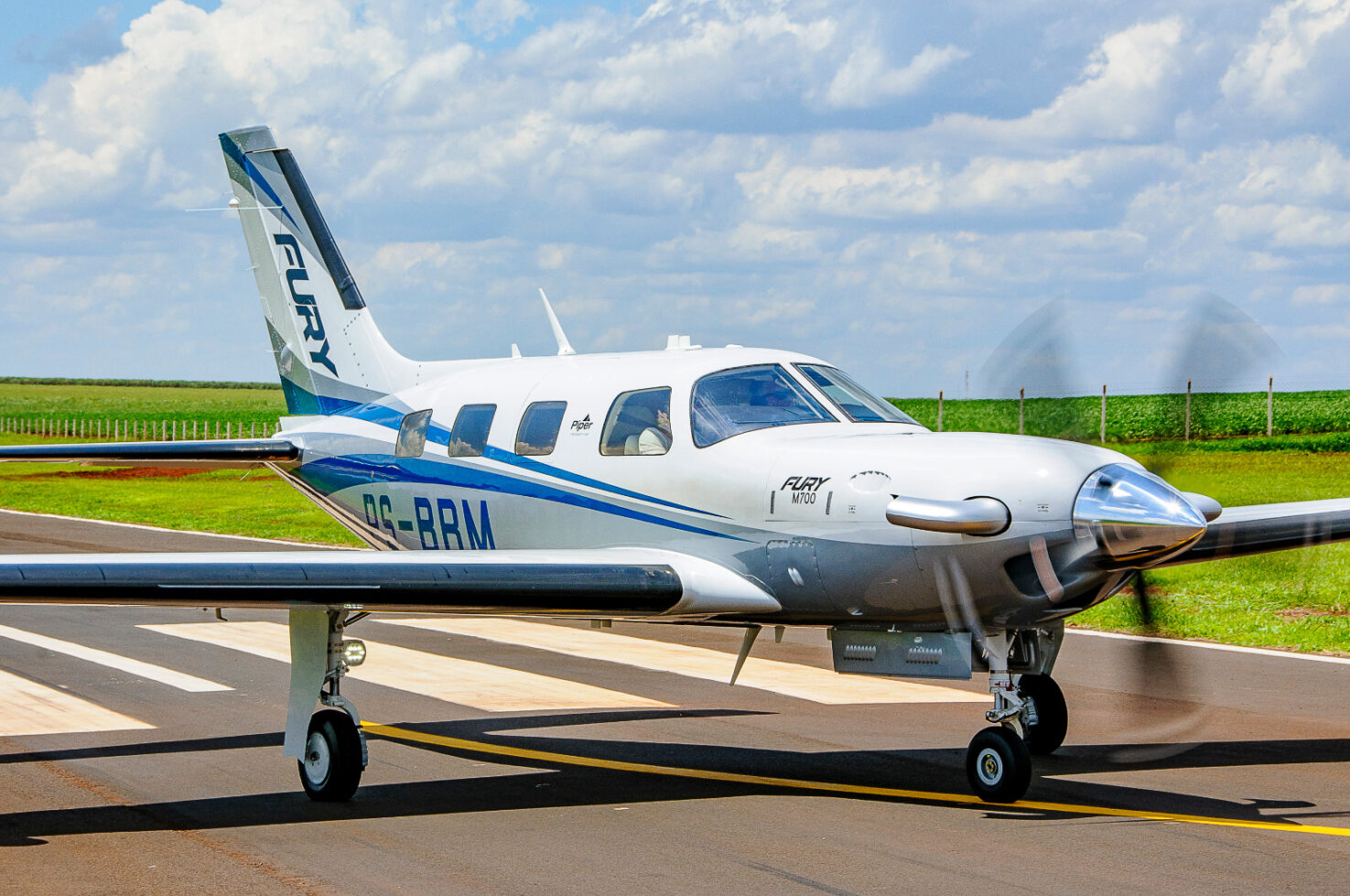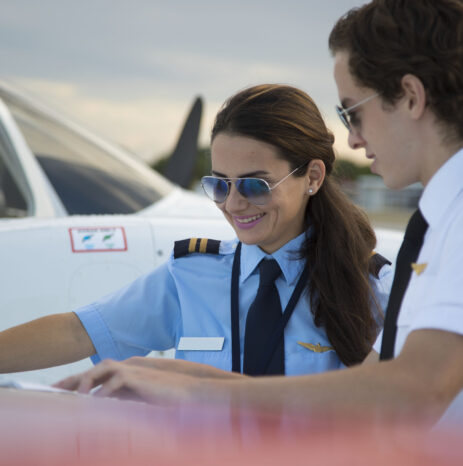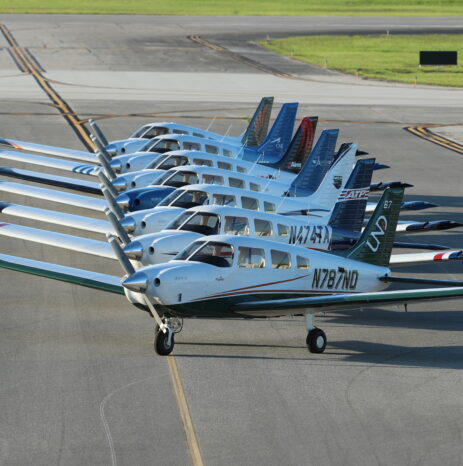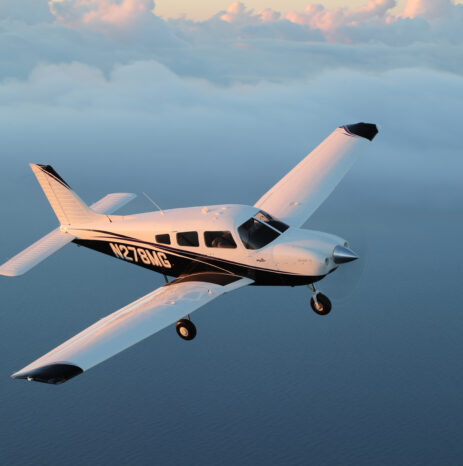For many aspiring aircraft owners, the Piper M700 Fury is the ultimate destination — a high-performance aircraft that combines speed, safety and advanced technology. But reaching that level of ownership doesn’t happen all at once. It takes time, experience and the right preparation along the way.
Whether you’re just entering the world of aircraft ownership or building time toward your next upgrade, this guide shows how you can start with a capable platform like the Piper Archer LX and progress with purpose toward the M700.
Step 1: Start Smart With the Archer LX
The Archer LX gives pilots the chance to build flight hours and expand their mission profiles while gaining hands-on experience. With a cruise speed of 128 knots true airspeed (KTAS) and a max range of 522 nautical miles, the Archer LX gives you plenty of capability for both local flights and longer trips. It’s powered by a 180-horsepower Lycoming engine and equipped with the Garmin G1000 NXi avionics suite, delivering intuitive flight management and situational awareness features found on more advanced aircraft.
The Archer LX’s stability and responsive handling provide a forgiving learning platform, while available safety features like Electronic Stability and Protection (ESP) give you early exposure to the kinds of systems found in more advanced aircraft.
The Archer LX gives pilots the chance to build flight hours and expand their comfort zone while gaining hands-on experience with modern avionics and safety-enhancing systems. Its approachable price point, low operating costs and strong resale value make it an appealing choice for newer owners.
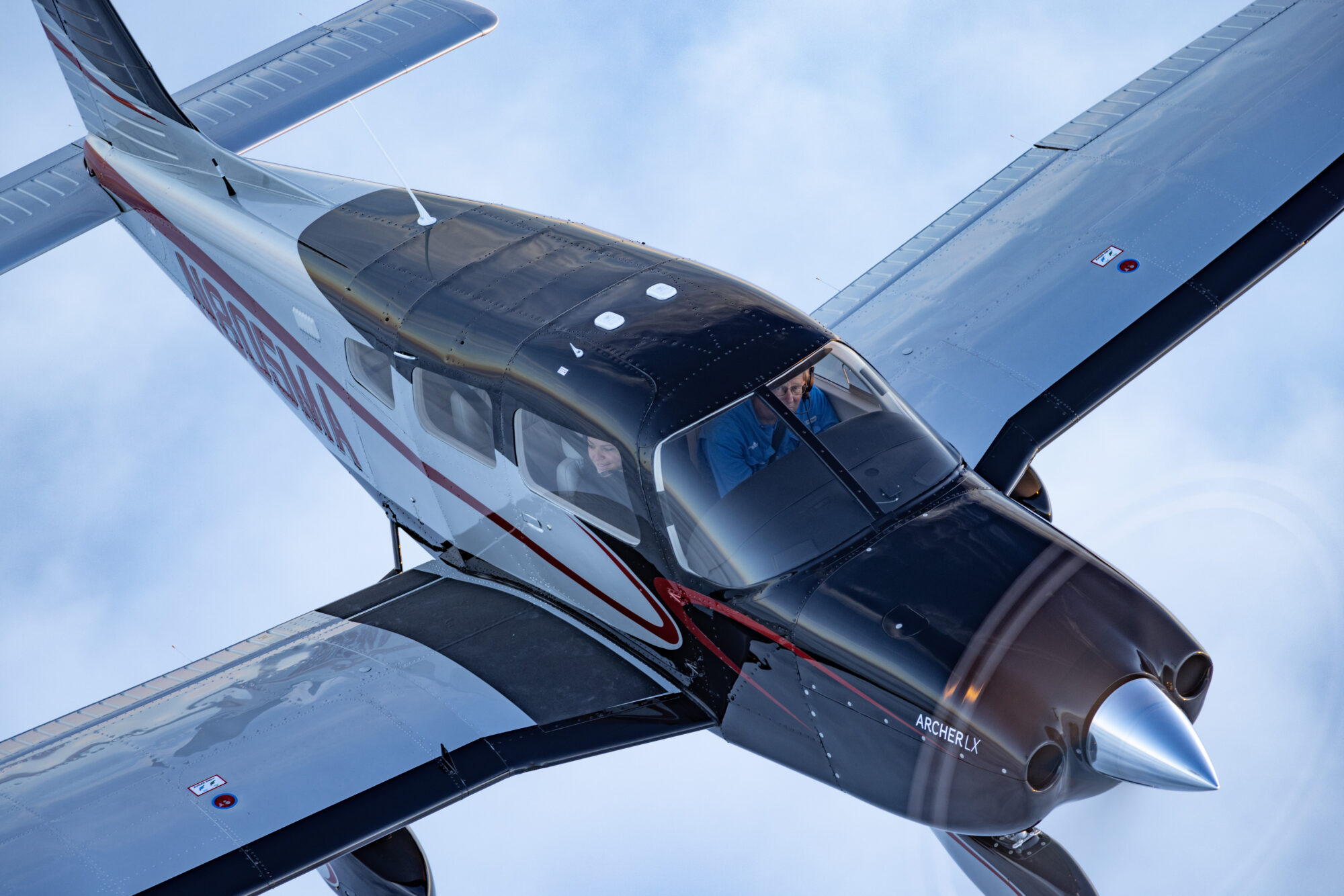
Step 2: Build Experience and Confidence
Next, you’ll move from basic proficiency to feeling truly at home in the cockpit. Your goal during this phase is to refine your judgment, improve situational awareness and get comfortable with cockpit decision-making. The more time you spend challenging yourself and expanding your skills, the more prepared you’ll be to safely handle the speed, altitude and complexity of a high-performance aircraft like the M700.
As you progress, you’ll begin flying longer cross-country trips, earning your instrument rating and practicing in a wider range of flight environments. You should also practice flying with passengers whenever possible to learn how to manage not just the aircraft but the full experience. These steps add a new layer of responsibility and are essential for building the confidence and decision-making skills needed to lead flights from start to finish.
It’s important to also learn how to make timely decisions in dynamic conditions, such as knowing when to divert, delay or reroute to stay ahead of the aircraft and maintain safety. This is also the time to start reviewing and simulating abnormal and emergency scenarios, such as engine issues, avionics failures or missed approaches. Building familiarity with these situations now ensures you’re prepared to handle them later when you’re moving faster, flying higher and managing more advanced systems.
Step 3: Know When You’re Ready To Move Up
After building hours and sharpening your skills in the Archer LX, the question becomes: when is the right time to move up? Before making the leap to the M700, here are key skills and milestones you should have under your belt:
- Instrument rating: Mastering instrument flight rules (IFR) operations is critical before flying aircraft that regularly operate at higher altitudes or in controlled airspace.
- Flight planning and weather analysis: You’ll need to be proficient in reviewing forecasts, avoiding weather systems and making alternate route decisions in real-time.
- Autopilot integration: Familiarity with coupled approaches, go-arounds and using Garmin avionics prepares you for the more advanced systems in the M-Class lineup.
- Aircraft management: Understanding fuel planning, systems monitoring and emergency procedures is essential as complexity increases.
- Cross-country experience: Building hours in varied environments helps develop judgment and decision-making that will carry over into turbine-class aircraft.
Fortunately, transitioning from a Piper platform like the Archer LX, especially if you’ve flown or chartered M-Class aircraft, makes this step smoother. The familiarity with cockpit layout, avionics and overall Piper design philosophy means you’re already well on your way to mastering the M700 Fury.
Optional Step 3a: Charter M-Class Aircraft While You Build Experience
If you’re close to upgrading but still undecided, you don’t have to rush the transition. Chartering an M-Class aircraft like the M350 or M500 can give you a feel for what’s ahead, letting you experience faster cruise speeds, pressurized cabins and more demanding flight conditions without the immediate commitment of ownership.
It’s also a smart interim step while market conditions stabilize. If you’re waiting for a better time to buy, whether due to inventory availability, financing rates or aircraft resale values, chartering keeps you flying in the meantime. You’ll continue gaining hands-on experience with M-Class performance, avionics and handling, so when the time is right, you’re already a step ahead.
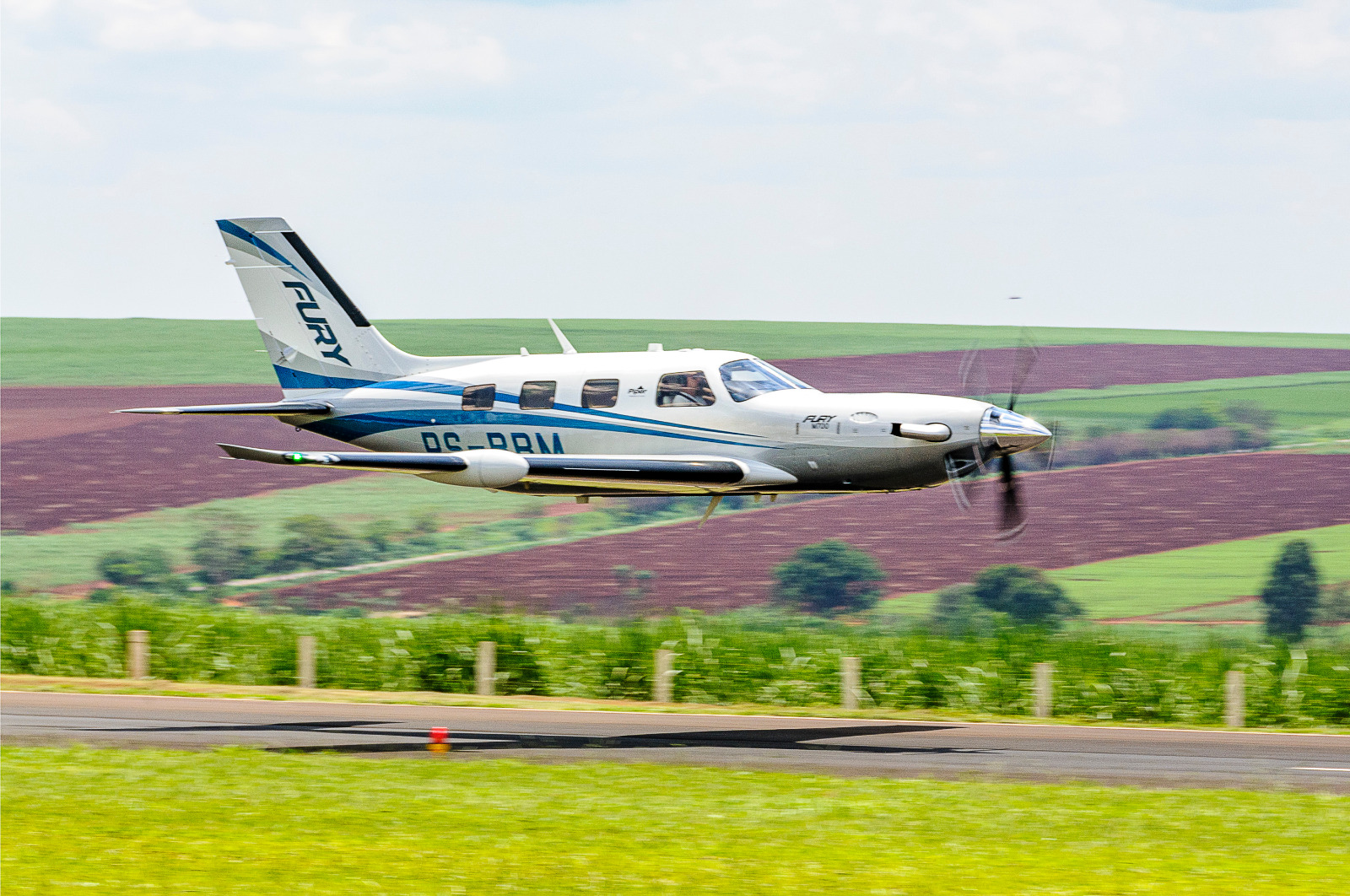
Step 4: Transition to the M350
For pilots who are ready to fly higher and further but aren’t yet ready for a turboprop, the M350 provides the perfect next step. This pressurized, twin-turbocharged piston aircraft bridges the gap between the Archer LX and the M700, combining familiar avionics with new systems that expand your capabilities and elevate your confidence.
With a maximum cruise speed of 213 KTAS and service ceiling of 25,000 feet, the M350 gives you the performance to fly above weather and traffic in a comfortable, pressurized cabin. Its Garmin G1000 NXi avionics suite, GFC 700 autopilot and full suite of safety features mirror much of what you’ll find in the M700, making it a natural step up in both capability and confidence.
The M350 also introduces you to a more sophisticated in-flight experience. From managing pressurization and power settings to navigating with weather radar and flight planning via PlaneSync, you’ll gain valuable knowledge that directly translates to turbine operations.
The M350 is a high-performance, luxurious platform in its own right. And if your ultimate goal is the M700, it’s one of the best ways to prepare for what’s ahead.
Step 5: Prepare To Upgrade to the M700 Fury
After gaining valuable experience in both the Archer LX and M350, you’re better positioned to make the transition to a high-performance turboprop. Reaching the M700 marks a major milestone, offering greater speed, range and capability for more ambitious flights.
As you prepare for this step, it’s important to consider the broader differences in costs. Moving from a piston-powered aircraft like the LX to a high-performance turboprop means higher upfront investment and increased operational requirements. Here’s an overview of what to consider:
- Fuel Consumption: Turboprop engines like the one in the M700 generally consume more fuel per hour than piston aircraft, leading to higher fuel expenses.
- Maintenance: While turboprop engines often have longer intervals between overhauls, the maintenance procedures can be more complex and costly due to the advanced systems involved.
- Insurance: Premiums may increase with the M700, reflecting its higher value and performance capabilities.
- Training: Pilots transitioning to the M700 will require additional training to master its advanced avionics and systems, which can entail both time and financial investment.
If you’ve owned an Archer LX, it may hold strong resale or trade-in value to help offset part of the upgrade.
Start Your Journey to the M700
Piper’s aircraft lineup offers a natural path for building the skills, experience and confidence needed at each new level of performance. Whether you’re just getting started with the Archer LX or planning your transition to the M700 Fury, every aircraft in the Piper family is designed to support your growth and readiness.
When you’re ready to take the next step, contact your local Piper dealer to explore your options and map out a path that fits your flying goals.
